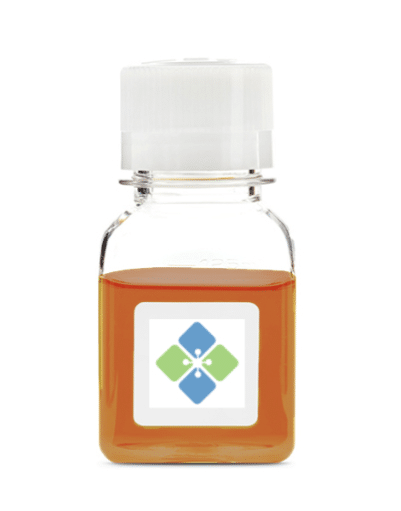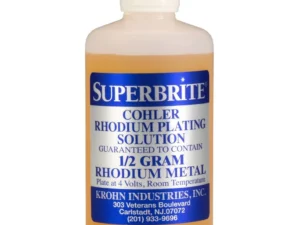Description
Ormosils: Bridging the Gap Between Organic and Inorganic Materials
In the realm of materials science, the quest for combining the best properties of different classes of materials has led to fascinating discoveries. One such innovation is the ormosil, a hybrid material that seamlessly blends the strengths of organic polymers and inorganic silicates. Derived from the acronym ORganically MOdified SILicates, ormosils offer a unique platform for tailoring material properties for a wide range of applications.
What are Ormosils?
At their core, ormosils are silicate networks to which organic functionalities have been covalently bonded. Imagine silica, the main component of glass, but with organic molecules strategically woven into its structure. This incorporation of organic components results in a material that possesses desirable characteristics from both worlds:
- From the Inorganic Silicate Network: High thermal stability, mechanical strength, chemical resistance, and optical transparency.
- From the Organic Modifiers: Flexibility, ease of processing, hydrophobicity, bioactivity, and the ability to incorporate specific functionalities like luminescence or reactivity.
The Magic of Synthesis: Sol-Gel Chemistry
The creation of ormosils typically involves a versatile technique called sol-gel chemistry. This process starts with liquid precursors, often metal alkoxides like tetraethyl orthosilicate (TEOS), which are then hydrolyzed (reacting with water) and condensed (forming bonds between molecules) to create a solid network. Importantly, organic modifiers, such as organically modified silanes (e.g., methyltrimethoxysilane or vinyltriethoxysilane), are introduced during the sol-gel process. These silanes contain both a reactive silane group that can participate in the silicate network formation and an organic group that imparts the desired functionality.
By carefully controlling the sol-gel process parameters – such as the type of precursors, the ratio of organic to inorganic components, pH, temperature, and catalysts – researchers can fine-tune the structure and properties of the resulting ormosil. This level of control allows for the creation of materials with bespoke characteristics tailored to specific applications.
A Powerful Platform with Diverse Applications
The versatility of ormosils has led to their exploration in numerous fields, including:
- Optical Materials: Ormosils can be doped with dyes or nanoparticles to create materials with tailored optical properties. They are used in optical waveguides, laser materials, sensors, and antireflective coatings. The high transparency and refractive index control offered by ormosils make them ideal for these applications.
- Coatings and Films: Ormosils provide durable, protective coatings for a variety of surfaces. They can enhance scratch resistance, improve UV protection, impart hydrophobicity or hydrophilicity, and even provide antimicrobial properties. These coatings find applications in automotive paint, architectural coatings, and biomedical implants.
- Biomaterials: The biocompatibility and biodegradability of certain ormosils make them promising materials for biomedical applications. They can be used as drug delivery systems, bone scaffolds, and biosensors. The ability to incorporate bioactive molecules into the ormosil matrix further enhances their potential in tissue engineering and regenerative medicine.
- Catalysis: Ormosils can act as supports for catalysts. The porous nature of the ormosil network allows for efficient diffusion of reactants and products, while the organic modifiers can provide specific binding sites for enhanced catalytic activity.
- Membranes and Separations: Ormosil membranes offer tunable permeability and selectivity, making them useful for gas separation, water filtration, and organic solvent nanofiltration.
Advantages of Ormosils:
- Tunable Properties: The ability to tailor material characteristics by varying the composition and synthesis conditions.
- High Thermal and Chemical Stability: The inorganic silicate network provides robustness.
- Good Mechanical Properties: A balance of flexibility and strength.
- Ease of Processing: Sol-gel chemistry allows for the creation of films, coatings, and bulk materials.
- Biocompatibility (in certain formulations): Making them suitable for biomedical applications.
Challenges and Future Directions
Despite their impressive potential, ormosils face challenges, including:
- Controlling the Structure: Achieving precise control over the distribution of organic modifiers within the silicate network.
- Scale-up: Scaling up the sol-gel process for large-scale production while maintaining consistent material properties.
- Long-Term Stability: Ensuring the long-term stability of the organic components within the ormosil matrix.
Future research is focused on addressing these challenges and exploring new applications for ormosils, including:
- Developing novel organic modifiers with enhanced functionalities.
- Improving control over the microstructure of the ormosil network.
- Exploring new synthesis techniques to create ormosils with enhanced properties.
- Investigating the use of ormosils in emerging fields, such as energy storage and environmental remediation.
Conclusion
Ormosils represent a powerful class of hybrid materials that bridge the gap between organic and inorganic materials. Their tunable properties, ease of processing, and diverse applications make them a promising platform for addressing a wide range of technological challenges. As research continues to advance, ormosils are poised to play an increasingly important role in materials science and beyond. They truly represent a testament to the power of combining the best of both worlds to create materials with unprecedented capabilities.







Reviews
There are no reviews yet.